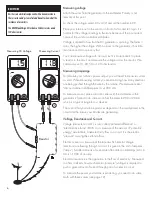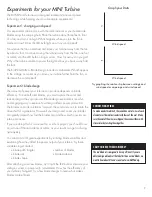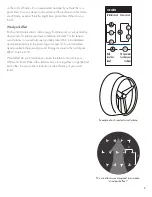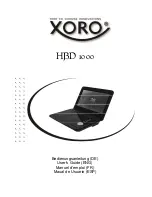
10
Tips on Making Blades
Efficient blades are key to maximizing power from a wind turbine. Sloppy
or poorly-made blades will never produce enough energy to power
anything. It takes time and thought to make good blades!
An important concept to keep in mind when making turbine blades is
drag. Drag, or wind resistance, is the force that opposes the rotation of
the blades. The amount of drag a blade experiences depends on how
fast it is moving through the air and the surface area of the blade. Faster
rotation means more wind resistance. More surface area means more
wind resistance. Ask yourself, “are my blades creating too much
drag
?”
If they are adding
drag
to your system it will slow down and—in most
cases—low RPM means less power output.
Tips on improving blades
• Shorten the blades: Wind turbines with longer blades tend to generate
more power. While this is also true on our small turbines, it is often
difficult for students (and teachers) to make large, long blades that don’t
add lots of drag and inefficiency. Try shortening them a few inches.
• Change the pitch: Try making the blades flatter toward the fan (0°–5°).
Pitch dramatically affects power output, so play with it a bit and see
what happens. You can use a protractor to measure the pitch.
• Use fewer blades: To reduce drag, try using 2, 3, or 4 blades.
• Use lighter material: To reduce the weight of the blades, use less material
or lighter material.
• Smooth surfaces: Smooth blade surfaces create less drag. Try removing
excess tape or smoothing rough edges to reduce drag.
• Find more wind: Make sure you are using a decently sized box or room
fan with a diameter of at least 14”–18”.
• Blades vs. fan: If the tips of your blades are outside the fan wind, they
are not catching any wind; they are just adding drag!
• Blade shape: The tips travel much faster than the root and can travel
faster if they are light and small.
Caution!
Do not touch the blades while they are spinning! They are moving very
fast and will hurt your hand if they hit you.
Do not stand in the “plane of rotation” of the blades (to the side of the
blades) in case something hits them and flies off. Stand in front of or
behind the turbine.
Wear safety goggles when the turbine is spinning.
Twisting
the blades (0° near the tip and around
10°–20° near the root) can improve performance.
More Drag
Less Drag
0°
45°
90°
Summary of Contents for MINI Wind Turbine
Page 1: ...MINI Wind Turbine Instruction Manual...
Page 13: ...15...
































